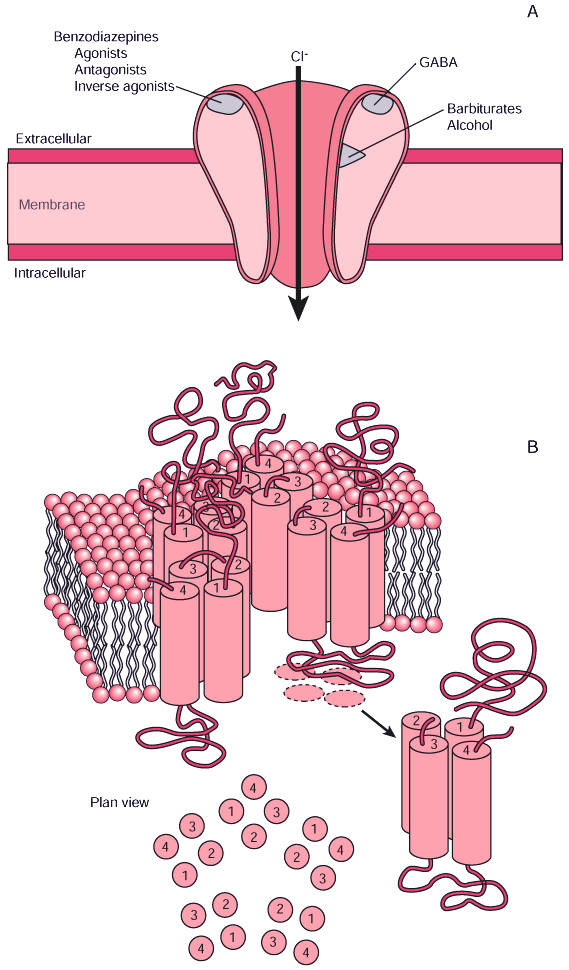 |
 |
Figure 3-32
Cross-section of a schematized γ-aminobutyric acid
(GABA)-benzodiazepine receptor complex, which is a prototypical ligand-gated ion
channel complex. Binding of benzodiazepine agonists to the GABAA
ligand-gated
ion channel facilitates the action of endogenous GABA. This results in increased
inhibitory chloride ion flux in the central nervous system. A,
Schematic drawing of the GABAA
ligand-gated ion channel complex shows
the receptor sites for benzodiazepines and GABA, as well as distinct receptor sites
for barbiturates and alcohol. B, Model of the GABAA
receptor and chloride ion channel shows that the protein complex is composed of a
hetero-oligomer of five subunits, including α, β, γ, and δ
or ρ polypeptides. Each subunit has four putative membrane-spanning domains
(numbered 1 through 4 and represented by cylinders). (A,
from Berkowitz DE: Cellular signal transduction. In
Schwinn DA [ed]: Scientific Principles of Anesthesia, vol 2. Philadelphia, Current
Medicine, 1998; B, adapted from Firestone L, Quinlan
J, Gyulai F: Mechanisms of anesthetic action. In
Schwinn DA [ed]: Scientific Principles of Anesthesia, vol 2. Philadelphia, Current
Medicine, 1998.)

 |
